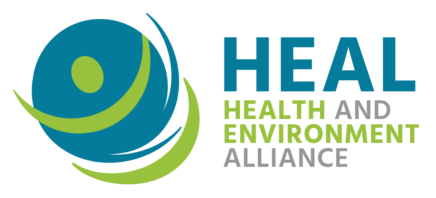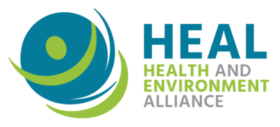Climate change, environmental pollution and biodiversity loss affect people’s health and generate multi-billion-euro economic losses, as a briefing produced by HEAL Poland under the patronage of the Institute of Water Economy and Meteorology of the National Research Institute and the Polish Federation of Asthma, Allergy, and COPD Patients Associations highlights.
The World Health Organization (WHO) has today published its much awaited new evidence-based Global Air Quality guidelines, the first update since 2005. Health groups now urge the European Union and national decision-makers to protect the health of hundreds of millions by stepping up efforts for clean air for health. This can be achieved first and foremost by fully aligning EU air quality standards with the science based guidelines and other new studies – a step that thousands of citizens have been calling for.
Air pollution is the top environmental threat to health in the European region and globally, and one of the five main risk factors for non-communicable and chronic diseases. In the European Union, poor air quality causes around 400,000 premature deaths and up to 940 billion EUR of health costs a year. Recent studies have pointed to children being particularly at risk of harm from polluted air, given that their lungs, heart, brain, respiratory, immune and nervous systems are still developing. Their health can already be affected before birth, with lifelong consequences.
“Two things have become blatantly obvious through the new WHO air quality guidelines: policy-makers have to take greater efforts to improve the quality of the air that we breathe, and they have to act quicker. That means fully aligning EU ambient air quality standards with WHO’s recommendations and the latest science by 2030, for a swift reduction of premature death and disease”, said Sophie Perroud, HEAL’s EU policy coordinator.
WHO, after a systematic review of the accumulated evidence, recommends lower values for several pollutants, most notably for particulate matter PM2.5, which causes the greatest health burden, for which a new annual concentration of 5 µg/m³ is now recommended (the current EU’s annual standard is 25µg/m³); for nitrogen dioxide (NO2), which has come under intense scrutiny in discussions on road transport and inner-city driving bans, a new annual concentration of 10 µg/m³ is now recommended (from previously 40 µg/m³).
“WHO and leading researchers in the field have reviewed hundreds of peer-reviewed studies. The body of evidence on how air pollution harms health is rock solid, and new studies even demonstrate impacts at low pollution levels”, said Peter van den Hazel, HEAL President. “The new WHO recommendations can be considered the gold standard, having been developed through a transparent, evidence-based quality control process that assures that each and every guideline is impactful and meets the highest international scientific standards. Although they are not legally binding, they have to be the compass when closing the gap between science and current protection through legislation”.
Clean air action is a no-regrets public health intervention that EU decision-makers have to aim for when fully aligning the Union’s air quality standards with WHO recommendations and the latest science.
HEAL, the leading European not-for-profit organisation addressing how environment affects health and bringing together over 90 member organisations from the health sector, has published a position paper with 10 key demands for the EU air quality standards process, calling for a rapid implementation with full alignment of EU standards with WHO guidelines and latest available science by 2030 and outlining key steps to be implemented along the way, such as monitoring, information systems, updating legislation, and addressing inequalities.
“In the past years, it was mainly the national governments who hit the brakes on air quality action, ignoring the numerous calls for clean air everywhere. We need to see more political will to reach truly health-protective standards. And we can score a double win here – as air pollution and climate change largely originate from the same sources, the combustion of fossil fuels, stricter air quality standards are also an important part of much needed climate action”, added Anne Stauffer, HEAL’s Deputy Director.

